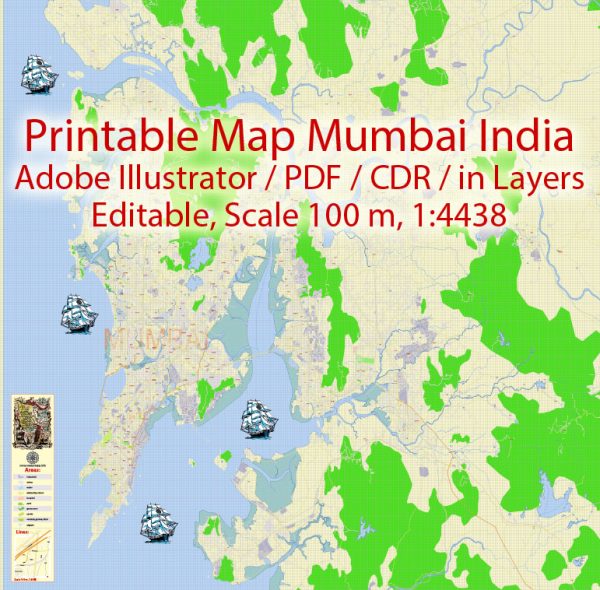Mumbai, located on the west coast of India, is a major hub for maritime and air transportation. As one of the most populous and economically significant cities in India, Mumbai plays a crucial role in the country’s transportation network.
Maritime Transportation:
- Port of Mumbai:
- Mumbai is home to one of the largest and busiest ports in India, the Jawaharlal Nehru Port Trust (JNPT). JNPT is a significant container port handling a large portion of India’s maritime trade.
- The port facilitates the import and export of a wide range of goods, including containers, bulk cargo, and liquid cargo.
- Shipping and Logistics:
- Mumbai serves as a key center for shipping and logistics companies. Many shipping lines operate from Mumbai, connecting the city to major international ports.
- Fishing Industry:
- The coastal location of Mumbai supports a thriving fishing industry. Fishing communities along the coastline contribute to the local economy, providing fresh seafood to the city and beyond.
Air Transportation:
- Chhatrapati Shivaji Maharaj International Airport (CSIA):
- CSIA, formerly known as Sahar International Airport, is the primary international airport serving Mumbai. It is one of the busiest airports in India and handles a significant volume of domestic and international flights.
- The airport has multiple terminals, including Terminal 2 (T2) which is the main international terminal and Terminal 1 for domestic flights.
- Connectivity:
- Mumbai is well-connected by air to major cities around the world. International flights operate to and from destinations in Asia, Europe, the Middle East, and North America.
- Domestically, Mumbai is a key hub for flights connecting major cities within India.
- Cargo Operations:
- In addition to passenger traffic, CSIA also handles a considerable amount of air cargo. The airport plays a vital role in facilitating the movement of goods and perishables through its cargo terminals.
- General Aviation:
- Mumbai has several airstrips and facilities catering to general aviation and private aircraft. These facilities contribute to the overall air transportation infrastructure of the city.
Intermodal Connectivity:
Mumbai’s transportation system benefits from strong intermodal connectivity, allowing for seamless movement of goods and people between different modes of transportation. The integration of maritime and air transportation with road and rail networks makes Mumbai a crucial node in India’s transportation landscape.
In summary, Mumbai’s maritime and air transportation infrastructure is essential for facilitating trade, connecting the city to the global economy, and serving as a vital hub for both passengers and cargo.



 Author: Kirill Shrayber, Ph.D.
Author: Kirill Shrayber, Ph.D.